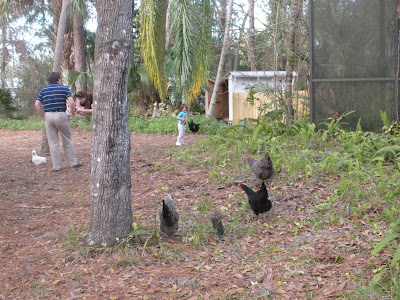
Some of our leafy vegetables have gone a while without being picked, and the additional warm weather has caused them to bolt. I've decided to let them flower and go to seed. They're pretty yellow flowers, and add a bit of spark to our garden. Nina thought it was pretty cool to learn that vegetables sometimes had flowers.
















































